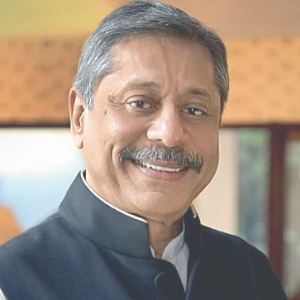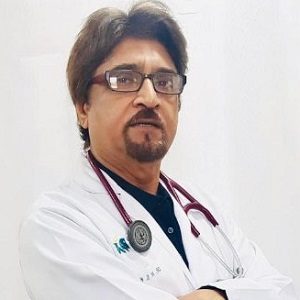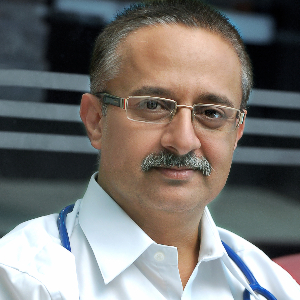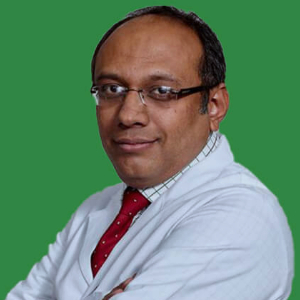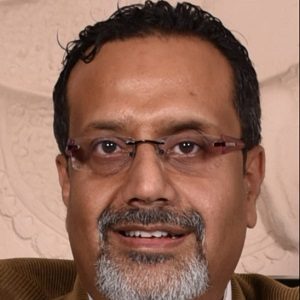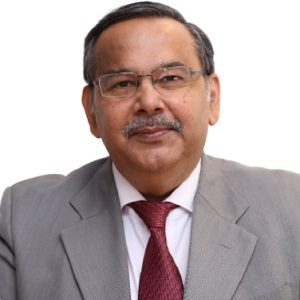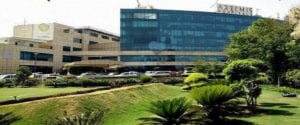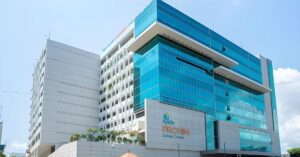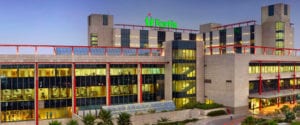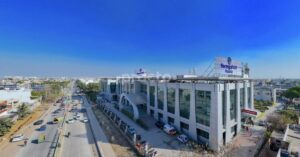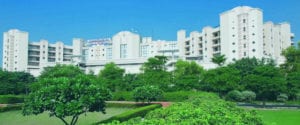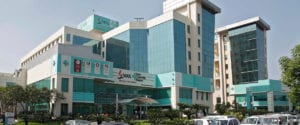Best Doctors in India for AVM Brain Treatment
- Cardiac Surgeon, Gurugram, India
- Over 40 years’ experience
- Medanta-The Medicity, Gurgaon
Profile Highlights:
- Dr. Naresh Trehan is one of the most highly skilled and globally recognized cardiothoracic and vascular surgeons.
- His experience encompasses 40+ years and is considered one of the most successful and accomplished cardiac surgeons in the country.
- Dr. Naresh Trehan specializes in cardiovascular surgery, cardiothoracic surgery, Heart Transplant, and Minimally Invasive Cardiac Surgery and has performed more than 48,000 successful open-heart surgeries to date.
- He started his career as a Cardiac Surgeon at New York University Medical Centre where he performed over 3000 coronary artery surgeries and returned to India in 1988 and founded the Escorts Heart Institute and Research Center in New Delhi.
- Dr. Trehan is the Founder Chairman of Medanta- The Medicity in Gurugram, a premier multi-specialty hospital with state-of-the-art infrastructure and equipped with the latest and advanced technologies.
- Top Pulmonologist and Respiratory Medicine specialist | Apollo Hospital, New Delhi, India
- 48+ Years Experience
- Indraprastha Apollo Hospital, New Delhi
Profile Highlights:
- Dr. M.S. Kanwar is a distinguished pulmonologist with an impressive 46-year career, renowned both in India and internationally for his expertise in COVID-19, sleep medicine, and pulmonary care.
- Dr. Kanwar’s pioneering spirit extends to sleep medicine, where he made history in 1995 by establishing the largest and most advanced sleep lab in India at Indraprastha Apollo Hospital in New Delhi. His work in this area has set a high standard for sleep disorder management in the country.
- His other areas of expertise include asthma, COPD, lung infections, COVID-19, lung fibrosis, ILD, tuberculosis, lung cancer, sarcoidosis, lung transplants, ICU-related diseases, sepsis, and mechanical ventilation. He is skilled in advanced procedures such as bronchoscopy, EBUS (Endobronchial Ultrasound), and medical thoracoscopy.
- Pediatric Cardiac Surgeon, New Delhi, India
- Over 30 years’ experience
- Marengo Asia Hospital, Faridabad
Profile Highlights:
- Dr. Rajesh Sharma is one of the most experienced and widely acclaimed Cardiothoracic and Vascular surgeons specializing in pediatric cardiac surgery in India.
- He provides treatment for both adult and pediatric heart diseases and disorders and focuses primarily on complex congenital heart diseases.
- Dr. Sharma’s expertise lies in infant and Neonatal cardiac surgery, surgery for transposition of the great arteries, Fontan circulation, and acquired heart diseases.
- His experiences encompass over 3 decades during which he has performed over 20,000 heart surgeries including congenital heart disorders as well as acquired heart defects.
- Hematologist & BMT Specialist, Gurugram, India
- Over 20 years’ experience
- Fortis Memorial Research Institute
Profile Highlights:
- Dr. Rahul Bhargava is a leading Hematologist and BMT specialist currently working at Fortis Memorial Research Institute, Gurugram.
- Dr. Bhargava has an experience of more than 20 years in Hematology, Pediatric Hemato Oncology, and BMT during which he has performed numerous BMTs with successful outcomes.
- He primarily specializes in Haploidentical and unrelated match transplants and has performed over 1500 transplants till date.
- In 2016, he became the first Indian doctor to perform and popularize BMT for Multiple Sclerosis.
- Top Rheumatologist | Apollo Hospital, New Delhi, India
- 30+ Years Experience
- Indraprastha Apollo Hospital, New Delhi
Profile Highlights:
- Dr. Sundeep Kumar Upadhyaya is one of the best Rheumatologists in India, working at Indraprastha Apollo Hospitals, New Delhi.
- He has over 30 years of experience in modern medicine, spondylitis, rheumatology, arthritis, and other connective tissue disorder treatment.
- Dr. Upadhyaya has also been a crucial part of various research.
- He was one of the first rheumatology experts in India to introduce bioagents to treat rheumatoid arthritis, inflammatory spondylitis, and ankylosing spondylitis.
- Dr. Upadhaya provides training for PG students in Apollo Hospital, New Delhi.
- Top Rheumatologist | Apollo Hospital, New Delhi, India
- 35+ Years Experience
- Indraprastha Apollo Hospital, New Delhi
Profile Highlights:
- With over 40 years of distinguished experience in Rheumatology, Dr. Prof. Rohini Handa is a leading Rheumatologist based at Indraprastha Apollo Hospitals, New Delhi. A celebrated figure in his field, he has a robust background that combines deep clinical expertise with significant academic and leadership roles.
- Dr. Rohini Handa is renowned for his expertise in managing a range of rheumatologic conditions, including Rheumatoid Arthritis, Myositis (muscle inflammation), Sjogren’s Syndrome (a condition leading to dry eyes and mouth), and Multiminicore Disease (a muscle disorder).
- He excels in performing key diagnostic and therapeutic procedures such as analyzing synovial fluid (the fluid within joints), conducting joint injections and aspirations (to remove excess fluid from joints), and administering cortisone injections (steroid treatments to alleviate inflammation).
Best Hospitals in India for AVM Brain Treatment
- City: Gurugram, India
Hospital Highlights:
- One of India’s best and largest multi-specialty hospitals, Medanta was built with the aim to bring India to the highest standards of medical care. The hospital has been providing the best medical services to its patients, since its inception, with care, commitment, and compassion.
- Equipped with 1250 beds, the hospital was founded by Dr. Naresh Trehan in the year 2009 with an aim to provide the best medical care at affordable costs. The hospital is spread across 43 acres and includes 45 operation theatres and 350 beds dedicated solely to ICU. The hospital includes over 800 doctors, and more than 22 specialty departments and has a dedicated floor for individual specialty in order to offer the best services under one roof.
- The hospital is considered one of the premier institutes in India for Cardiac Care and includes staffs and members of high caliber. The hospital has 6 distinct centers of excellence.
- City: Gurugram, India
Hospital Highlights:
- Artemis Hospital, established in 2007 in Gurugram, India, is a leading multi-specialty institution known for its excellence in patient care and advanced medical technology, offering comprehensive services across specialties like Cardiology, Oncology, Neurology, Orthopedics etc.
- Renowned for its patient-focused care, Artemis Hospital combines state-of-the-art infrastructure with a team of internationally trained doctors and surgeons, ensuring the highest standards of medical treatment.
- Accredited by JCI and NABH, Artemis Hospital meets global healthcare quality and safety standards, reflecting its commitment to providing compassionate, personalized care.
- The hospital is recognized for utilizing cutting-edge diagnostic and ther*peutic techniques, ensuring patients receive accurate diagnoses and effective treatments tailored to their needs.
- City: Chennai, India
Hospital Highlights:
- The Apollo Proton Cancer Centre in Chennai is the most sought-after private cancer hospital in India. It is an integrated facility that provides cutting-edge, all inclusive cancer treatment to patients all over the globe.
- The hospital is a part of the renowned Apollo Group which has a large network of over 74 hospitals in India and across the globe. Out of the 74 hospitals, 21 of them are cancer centres. However, Apollo Proton Cancer Centre is the only cancer hospital to have JCI accreditation.
- The Centre, which was established on the principles of excellence and expertise, unites a formidable medical staff led by some of the most illustrious figures in cancer treatment.
- The hospital follows the global ASTRO Model Policy. It is the same global policy which is followed by countries like USA, UK, and Europe.
- Apollo Proton Cancer Centre is among the very few hospitals in India to receive patients from First World countries such as USA, Canada, New Zealand, Australia, Singapore, Thailand, etc.
- Apart from that, it is also the first hospital in Chennai to receive patients from several countries like Uzbekistan, Kazakhstan, Turkmenistan, Georgia, Armenia, Azerbaijan, SAARC countries (Bangladesh, Nepal, Sri Lanka, Maldives, Bhutan, Afghanistan, and Pakistan), South Africa, Turkey, Egypt, etc.
- In fact, there is a dedicated team at the Apollo Proton Cancer Centre that serves only international patients. Thus, on a monthly basis, the Centre receives patients from across 32 countries.
- Moreover, there are certain treatments in Apollo Proton Cancer Centre that are not available in any other centre. APCC addresses all types of possible cancers that are usually not covered by any other centre.
- City: New Delhi, India
Hospital Highlights:
- Over the last 33 years, the Fortis Escorts Heart Institute has set new standards in cardiac treatment with groundbreaking research. It is now known around the world as a centre of expertise for Cardiac Bypass Surgery, Interventional Cardiology, Non-invasive Cardiology, Paediatric Cardiology, and Paediatric Cardiac Surgery.
- The hospital has cutting-edge laboratories that perform a wide range of diagnostic tests in Nuclear Medicine, Radiology, Biochemistry, Haematology, Transfusion Medicine, and Microbiology.
- Fortis Escorts Heart Institute boasts a diverse group of bright and experienced doctors who are backed up by a team of highly qualified, experienced, and devoted support professionals as well as cutting-edge equipment such as the recently installed Dual CT Scan.
- Approximately 200 cardiac doctors and 1600 personnel currently collaborate to manage over 14,500 admissions and 7,200 emergency situations each year. The hospital now has a 310-bed infrastructure, as well as five cath labs and a slew of other world-class amenities.
- City: Gurugram, India
Hospital Highlights:
- Fortis Memorial Research Institute (FMRI) is a premier multi-super-specialty, quaternary care hospital, known for its exceptional international faculty, top-tier clinicians, super-sub-specialists, and specialized nurses, all supported by cutting-edge technology.
- It is the flaship hospital of Fortis Healthcare Limited, part of IHH Healthcare Berhad, a leading integrated healthcare services provider in India. As one of the country’s largest healthcare organizations, Fortis operates 28 healthcare facilities with over 4,500 operational beds (including O&M facilities) and more than 400 diagnostic centers (including joint ventures).
- Recognized as one of the top hospitals in India, FMRI serves as a leading referral center and aspires to be the ‘Mecca of Healthcare’ for India and beyond. Its 11-acre campus is a testament to its commitment to providing world-class healthcare.
- Accredited by JCI and NABH, FMRI is dedicated to maintaining the highest standards of healthcare quality and safety, ensuring that every patient receives the best possible care. The hospital’s reputation is further enhanced by its state-of-the-art facilities and innovative medical practices.
- City: New Delhi, India
Hospital Highlights:
- The Indian Spinal Injuries Center (ISIC), provides state-of-the-art facilities for the management of all types of spinal ailments.
- Staffed with internationally trained, acclaimed, and dedicated spine surgeons, the hospital provides cutting-edge medical & surgical technology. The hospital provides comprehensive management of spinal injury, back pain, spinal deformities, tumors, osteoporosis, etc.
- The hospital performs motion-preserving spine surgeries including disc replacement and dynamic fixation, and minimally invasive spine surgeries such as endoscopic disc excision.
- The orthopedic service of the hospital covers all orthopedic ailments including trauma, joint diseases & replacements, oncology, pediatric orthopedics & upper limb ailment.
- City: Faridabad
Hospital Highlights:
In the sprawling city of Faridabad, where healthcare needs are diverse and ever-evolving, one institution has consistently stood out as a beacon of excellence in the field of medicine—Marengo Asia Hospital. Established with a vision to provide world-class healthcare services to the community it serves, Marengo Asia Hospital has emerged as a trusted name synonymous with quality, compassion, and innovation in healthcare.
- City: New Delhi, India
Hospital Highlights:
- Indraprastha Apollo Hospital is a 700-bedded multispecialty hospital in the heart of the capital of India. It is a part of Apollo Hospital group, one of India’s most reputed healthcare chains. Indraprastha Apollo Hospital has been accredited by Joint Commission International, making it the first internationally accredited hospital in the country in 2005.
- There are 52 specialties in the hospital with one of the best cardiology centers in the country. The hospital is also equipped with State of the art infrastructure facilities with the largest Sleep Lab in Asia and the largest number of ICU bed facilities in India.
- The latest and highly advanced technologies that are installed in the hospital include Da Vinci Robotic Surgery System, PET-MR, PET-CT, Cobalt-based HDR, Brain Lab Navigation System, Tilting MRI, Portable CT scanner, 3 Tesla MRI, 128 Slice CT scanner, DSA Lab, Endosonography, Hyperbaric Chamber and Fibro scan.
- City: New Delhi, India
Hospital Highlights:
- One of the well-regarded providers in India committed to the highest standards of clinical excellence and patient care, Max Super Specialty Hospital is a part of Max Healthcare, which is the second-largest healthcare chain in India. Regarded as one of the most well-regarded healthcare providers in the country, Max Super Specialty Hospital is committed to the highest standards of clinical excellence as well as patient care. The hospital is also equipped with the latest technology as well as cutting-edge research. The hospital is known to deliver and ensure the highest level of patient care.
- The hospital has more than 500 beds and offers treatment for over 35 specialties. The hospital also holds the credit of having installed the first Brain Suite in Asia. This is a highly advanced Neurosurgical machine that allows MRI to be taken while surgery is ongoing.
- Other advanced and latest technologies are also installed in the hospital such as the 1.5 Tesla MRI machine, 64 Slice CT Angiography, 4D ECHO, LINAC, and 3.5T MRI machine.
- City: Kolkata, India
Hospital Highlights:
- Founded in 2017, the HCG EKO Cancer Centre is a committed, all-inclusive cancer care facility in Kolkata.
- The hospital was collaboratively established by India’s leading cancer care provider HCG (HealthCare Global Enterprises Ltd.), and EKO Diagnostic Pvt. Ltd., a top diagnostic and imaging chain in Eastern India.
- With 88 beds, the hospital provides a full spectrum of services including diagnosis, prevention, screening, second opinions, treatment, rehabilitation, follow-up, and palliative care.
- Additionally, the hospital contains a day-care chemotherapy ward, Neutropenic ward, medical ICU, pharmacy, blood bank, and an IPD wing.
- At HCG EKO Cancer Centre Kolkata, a large team of cancer experts with experience in medical oncology, surgical oncology, radiation oncology, hemato oncology, BMT, and nuclear medicine collaborate to offer a variety of treatment options under one roof.
- Furthermore, the hospital is also known for employing the most advanced radiation technology such as, the Radixact, a next-generation TomoTherapy equipment that provides greater radiation delivery precision.
WHAT IS AN AVM BRAIN?
What causes Brain AVM?
The primary cause of AVM is still unclear. Some people have brain AVM by birth while some others develop the same later. A notable point is the passing down of this malformation amongst families, genetically.
Occurrence rate of AVMs
Brain AVMs occur very rarely and their occurrence rate is around 1% of the population. However, you might observe male predilection for AVM of the brain.
Where AVMs occur
Although an AVM may develop anywhere within the body, the most common sites are the brain and spine. However, brain AVM is rare and affects only a small chunk of the human population.
Symptoms of Brain AVMs
You may not notice any symptoms of brain AVM till it ruptures. Rupturing of AVM of the brain may result in bleeding within the brain which is termed hemorrhage. A majority of the patients with brain AVM experience hemorrhage as the first sign. Other symptoms of brain AVM include:
- Constant pain in any specific area of the head
- Problems with speech
- Progressive loss of neurological function
- Numbness or paralysis
- Dizziness
- A problem in understanding language
- Nausea and vomiting
- A problem in performing certain tasks that require planning
- Back pain
- Loss of coordination
- Seizures
- Muscle weakness in a specific part of the body
- Loss of consciousness
- Weak lower limbs
- Confusion
- Vision loss
- Serious unsteadiness
- Hallucinations
- Inability to understand what others are saying
- Loss of control on eye movements
- Tingling sensations
Causes of bleeding AVM
The abnormal blood vessels in brain AVM are weak. Hence, they direct blood in a direction against the tissues of the brain. As there is dilation of the abnormal blood vessels with time, they tend to burst. A brain AVM ruptures and bleeds because of the blood flow in a high pressure coming from the arteries.
Chances of AVM bleeding
A brain AVM generally develops between the age of 10 years to 40 years. On average, the chances of bleeding of brain AVM is between 1% to 3% per year. If it bleeds for the first time, the patients are at risk of recurrent bleeding within a short period. Teenagers and the young age group people are at a high risk of experiencing recurrent bleeding.
When to visit the doctor?
If you notice any signs or symptoms of brain AVM, you must visit the doctor immediately. These cases require emergency medical attention otherwise they may bleed profusely & prove to be fatal.
Stages of brain AVM
- Stage 1 of Quiescence: AVM brain malformation is quiet in this stage. The skin surface above the AVM is red and feels a little warm.
- Stage 2 of Expansion: The malformation increases in size to become larger and it is easy to feel the pulse within the malformation.
- Stage 3 of Destruction: The brain AVM begins to bleed and pain.
- Stage 4 of Decompensation: This stage may turn out to be fatal as heart failure occurs in most cases.
Can AVM bleeding prove fatal?
Around 10% to 15% of deaths occur after each AVM brain bleeding. Some patients experience permanent brain damage that accounts for around 30% of the total cases. Every bleed contributes to the damage of normal tissues within the brain that may alter the normal brain functions temporarily or permanently.
Types of Brain AVM
There are 5 different types of brain AVM. These types are listed as under:
- True AVM: This is the most common type of malformation in which the abnormal blood vessels tangle. However, there is no interfering normal tissue of the brain.
- Venous malformation: This malformation involves only the abnormal veins.
- Dural fistula: Dura mater, the covering of the brain, often gets involved in an abnormal connection with the blood vessels. This results in the formation of a dural fistula. There are three types of dural fistulas namely transverse- sigmoid sinus dural fistula, dural carotid-cavernous sinus fistula, and sagittal sinus-scalp dural fistula.
- Cryptic or occult AVM or cavernous malformations: This type of vascular brain malformation doesn’t draw away large quantities of blood. Such malformations may cause seizures and bleed.
- Hemangioma: Abnormal blood vessels at the brain or skin surface are termed hemangioma.
Risk factors of Brain AVM
Males are at a higher risk of developing brain AVM. Apart from this, families with a history of brain AVM have generic passing down of the same.
Complications of Brain AVM
The complications of brain AVM include stroke, speech or movement problems, low quality of life, developmental delays (in children), and numbness in specific parts of the body. Other complications associated may be:
- Weaker blood vessels: An AVM brain exerts pressure on the weaker blood vessels. This may result in an aneurysm or a bulge in the walls of the blood vessels that may rupture later.
- Hemorrhage: AVM causes the walls of the affected veins and arteries to weaken which results in bleeding within the brain or hemorrhage. While hemorrhage goes undetected in some people, some others experience episodes that may be life-threatening.
- Brain damage: In many cases, AVM increases in size to constrict some portions of the brain. Because of this, protective fluids are unable to circulate freely and instead collect at a place. This may cause brain tissue to get pushed against the skull resulting in brain damage.
- Reduced oxygen supply: When brain AVM develops, blood circulates directly to the veins & the arteries. Because of this, surrounding tissues are unable to absorb oxygen from the blood, and these tissues weaken or die.
How Brain AVMs are diagnosed
Your doctor will review all your symptoms and perform a thorough examination. For forming a diagnosis, he or she might ask you to undergo certain tests. These tests are usually performed by neuroradiologists. They are professionally trained to conduct imaging tests for finding the cause and the diagnosis of the condition.
Tests
- CT scan: A Computerized Tomography scan creates a cross-sectional radiographic image of the brain through an x-ray series. Sometimes, doctors perform angiograms which involves injecting a dye. This dye is injected into the veins through a tube so that minute details can be seen.
- Cerebral arteriography: Also called cerebral angiography, it helps to accurately diagnose AVM. It reveals not only the characteristics of arteries that supply AVM and the draining veins but also the exact location. These details are essential for the diagnosis and treatment of the condition. Your doctor will insert a tube called a catheter in the artery of the groin region. He or she will use x-ray imaging to thread it to the brain. Injecting the dye will make the blood vessels clear enough to be seen in the x-ray imaging.
- MRI: Magnetic Resonance Imaging uses radio waves and magnets to obtain precise brain images. This test will provide you with the exact location of AVM within the brain along with any other bleeding spot. Alternatively, your doctor might perform Magnetic Resonance Angiogram using the dye.
Treatment of Aterivenous Malformations (AVMs) of Brain
There are ample treatment options for this malformation. The primary goal is to avoid hemorrhage but it is vital to consider the neurological complications. Your health, gender, age, location, and size of the blood vessels are some critical factors that help in determining the right treatment option.
Stereotactic radiosurgery
This type of treatment involves radiation for the destruction of the brain AVM. To simply put, this isn’t surgery but involves targeting of AVM by the radiation beams. This damages the abnormal blood vessels leaving a scar. The scarred blood vessels clot off within a few years of the treatment. If you have a small AVM that can’t be removed with conventional surgery then your doctor might suggest SRS. People having hemorrhages that may turn fatal also undergo SRS treatment
Endovascular Embolization
It is also called interventional neuroradiology. Your doctor will insert a catheter tube into the artery of your leg and thread it with the brain blood vessels. The catheter is placed in one of the arteries that feed AVM followed by injecting of the embolizing agent. This will block the blood flow to the feeding artery. This is a minimally invasive procedure and is usually done before any surgery. It reduces the chances of AVM bleeding and reduces its size. Endovascular embolization also decreases the chances of stroke-type symptoms.
Surgical removal or resection
If the AVM is bleeding or is located in an easily accessible area of the brain, resection via conventional brain surgery is a preferable treatment option. Your doctor will temporarily remove a portion of your skull to perform resection. AVM can be easily removed with the help of special clips followed by reattachment of the skull bone. Suturing of the incision follows this process to close the scalp region.
Medical therapy
If you aren’t experiencing any symptoms of AVM or the AVM is located in an inaccessible area, you will undergo conservative management. Your doctor will ask you to avoid excess workouts and exercise. Also, you will have to discontinue the intake of blood thinners or anticoagulants like warfarin.
Specialists for brain AVM treatment
A brain AVM treatment is performed by specialists who hold a specialization degree in such cases. They may be:
- A neurosurgeon or radiation therapist who performs stereotactic radiosurgery treatment.
- A stroke neurologist who is proficient in the medical management of such malformations. They can also diagnose easily and perform imaging of the head, neck, and brain region.
- The vascular neurosurgeon can perform surgical removal of AVM of the brain.
- An endovascular neurosurgeon or interventional neuroradiologist who excels in endovascular therapy.
Prevention and prognosis
Most commonly, an AVM occurs by birth or sometime later after the birth of the child. Prevention is difficult as the causes are unknown for a majority of the cases. However, the best thing would be to seek medical attention as soon as you notice the first symptom for a better prognosis. Timely medical treatment always helps in easy management and provides a better quality of life. People who get to know about AVM through bleeding usually die. Some others experience seizures and problems with the nervous system. Many people with undetected AVM till their 50s or 60s experience no symptoms and are stable.
Follow up
You need to visit your doctor regularly for follow-ups after getting surgically operated on for brain AVM. Your doctor might advise you imaging tests again to ensure there is no recurrence and the malformation has resolved completely.
FAQs on Brain AVM
Brain AVM is curable within 2-3 years of treatment. Radiosurgery is often a treatment choice for AVMs that are small in size but in exceptional cases, one may opt for it even for the removal of large AVMs.
One in 2000 people develop brain AVM. A majority of the people live normally with it but they have a risk of bleeding AVM at some time. Sometimes, they may also suffer a stroke due to AVM.
In most cases, AVMs do not rupture. However, there may be recurrent bleeding after it ruptures once.
Most of the asymptomatic AVM cases have a history of bleeding. Due to increased stress, you may have high BP. This may cause the AVM to bleed as the blood will flow at a fast rate and the vessel walls will be weak.
The most important thing to keep in mind is that you must avoid anything that elevates the blood pressure. If you perform a high workout or a strenuous activity, your blood pressure may rise. This will result in strain on your malformation and there are high chances of AVM rupture or bleeding.
AVM is a collection of abnormal blood vessels that restrict blood circulation to the brain. It may sometimes be accompanied by vascular tumors that are surgically removed.
Although there are no cases of passing down of AVM in families, a mere 5% of cases are due to autosomal dominance. However, the causes of AVM are still unknown in a majority of the cases as it is present by birth.
A Grade 4 or Grade 5 AVM is considered a large AVM as it is big and deep within the brain. In most cases, a large AVM is considered to be a risky malformation to be operated upon.
No, AVM hasn’t been identified as a condition of disability but severe complications of its rupture may result in the disability of the person.
No, a brain AVM does not cause any kind of personality changes. However, a patient may experience emotional changes due to the stress of the same.
The warning signs of a brain aneurysm are seizures, headache, nausea, vomiting, loss of consciousness, stiff neck, drooping eyelids, and blur vision.
The symptoms of a brain aneurysm headache are pulsing sensation and throbbing pain. This may last for a couple of hours to a few days and it may be debilitating. The patient might also experience sensitivity to extreme sound and sunlight.
Medical therapy can help you get relief from the symptoms of AVM like headache and pain. You can perform routine activities only after several weeks following the surgery. Most patients require around 4 to 6 months to completely recover from the condition.
There will be a headache suddenly that is severe enough to disturb the patient. The patient will experience headaches in only a specific region of the head with a ringing sound in the ear.
A Cavernoma or a cavernous angioma or a cavernous malformation is one of the types of AVM of the brain. It also contains a collection of weakened blood vessels that block the blood flow.

